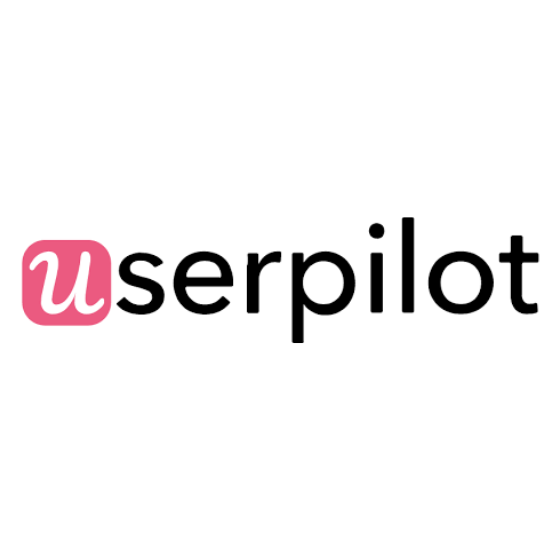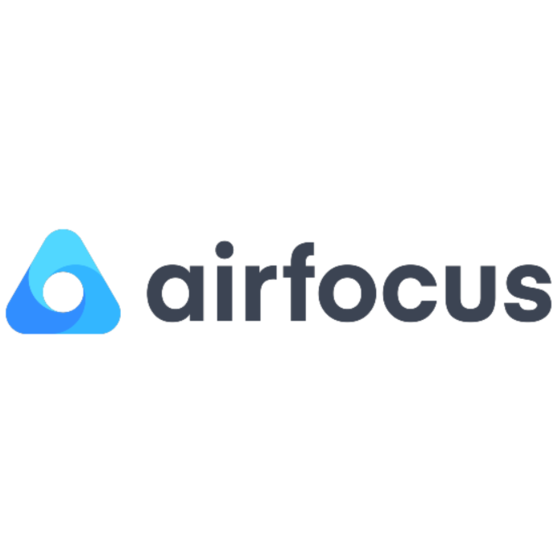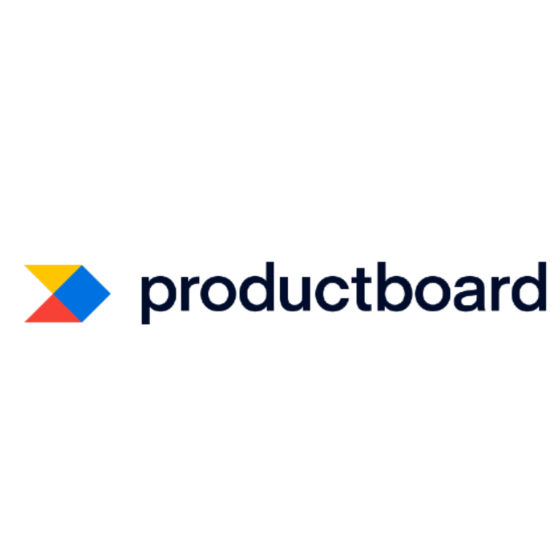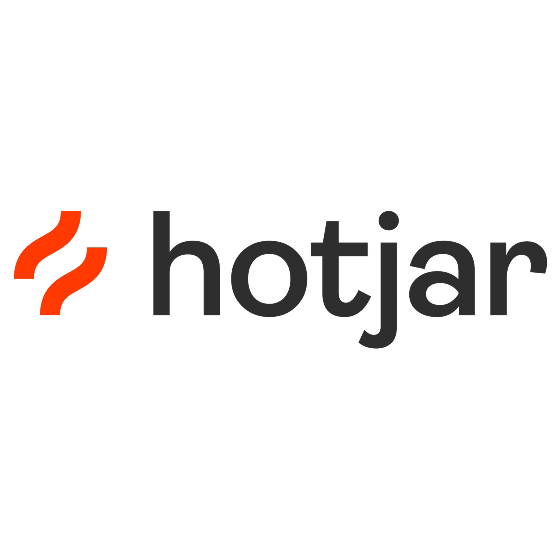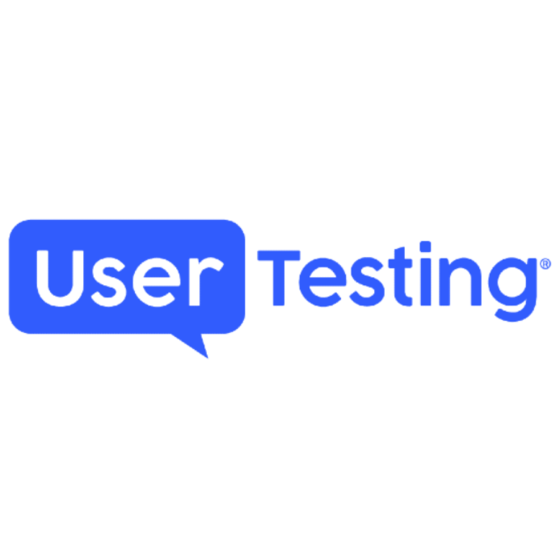10 Product Feedback Software Shortlist
Here's my pick of the 10 best software from the 30 tools reviewed.
There are seemingly countless product feedback software solutions available, so figuring out which is best for you is tough. You want to collect, centralize, and analyze feedback and turn it into actionable tasks for development teams but need to figure out which tool is the best fit. I've got you! In this post I make things simple, leveraging my experience managing big, complex products, and using dozens of different tools to bring you this shortlist of the best product feedback software.
What is product feedback software?
Product feedback software is a special type of tool that helps product managers collect, manage, and analyze feedback from users, customers, and stakeholders regarding a particular product. The tool does this by automating the feedback-collecting process and turning it into data you and your teams can analyze and provide a better customer experience.
These tools are invaluable for understanding customer needs, improving product features, and making data-driven decisions to enhance the overall product experience. Common features include categorization and tagging, user sentiment analysis, trend reports, feedback surveys, and collaboration.
The 10 Best Product Feedback Software Comparison Chart
Here is a table you can use to compare the tools we just covered in the overviews.
| Tool | Best For | Trial Info | Price | ||
|---|---|---|---|---|---|
| 1 | Best for product decisions | 14-day free trial + free plan available | Pricing upon request | Website | |
| 2 | Best for organizing feedback from multiple sources | Free demo available | from $500/month (min 5 seats) | Website | |
| 3 | Best for analyzing feedback at scale with AI | 14-day free trial + free plan available | From $175/month (billed annually) | Website | |
| 4 | Best for bug reporting | 15-day free trial | From $99/month | Website | |
| 5 | Best for turning feedback into actionable roadmaps | 7-30 day free trial | From $24/user/month | Website | |
| 6 | Best for building custom feedback forms | 14-day free trial | From $329/month | Website | |
| 7 | Best for public suggestion boards | Featurebase offers a 10-day free trial upon sign-up without needing a credit card. | Subscription plans start at $19 per month. | Website | |
| 8 | Best for product adoption | 14-day free trial | From $299/month | Website | |
| 9 | Best for customer experience management | Free demo available | Pricing upon request | Website | |
| 10 | Best for aggregating customer feedback | 14-day free trial | From $49/month | Website | |
| 11 | Best for team collaboration | 14-day free trial | From $59/editor/month | Website | |
| 12 | Best for feedback analysis with tailored surveys | 14-day free trial + free plan available | From $19/month | Website | |
| 13 | Best for customer-led product discovery and feedback | 14-day free trial | From $99/creator/month | Website | |
| 14 | Best for feature voting | Free plan available | From $29/month | Website | |
| 15 | Use unifying data and systems to create dialogues with the customer and make the most of every opportunity. | 14-day free trial | From $29/user/month (billed annually) | Website | |
| 16 | Best for product roadmapping | 15-day free trial | From $20/user/month (billed annually) | Website | |
| 17 | Track user experience in real-time to get qualitative and quantitative feedback. | Free plan available | From $39/month (billed annually) | Website | |
| 18 | Capture and leverage customer feedback to identify customer complaints and pain point trends. | 14-day free trial | From $49/user/month | Website | |
| 19 | Create, launch, and manage various tests to collect feedback and gain engagement levels and marketing campaign reach. | Free demo available | Pricing available upon request | Website | |
| 20 | Identify products or services to provide or improve. | Not available | Website |
Overviews Of The 10 Best Product Feedback Software
Here’s a brief description of each product feedback software to showcase best use cases, noteworthy features, and screenshots to give a snapshot of the user interface.
Pendo helps businesses collect customer requests from their applications without interrupting their experience. Small and medium businesses, as well as large enterprises, can utilize this cloud-based platform. Internal teams can also implement requests on the customer’s behalf and submit their own feedback. The platform is a comprehensive solution for analytics, customer onboarding, and in-app feedback.
Pendo is an analytics tool you can use to track your customers’ activities and understand how they’re using your product. The information the platform provides can help product managers make crucial product decisions, track how customers are adopting features, and monitor behavior. You can use Pendo to request feature suggestions from your customers and allow them to browse feature ideas, vote, and add their ideas using a feedback form. Your team can analyze these results to determine which features are popular or valued by customers.
Features include sentiment analysis, in-app walkthroughs, targetted messanging, feedback surveys, customer roadmaps, and reporting.
Pendo integrates with various third-party applications, such as Calendly, Hubspot, Salesforce Sales Cloud, Slack, Zapier, and Zendesk.
Pendo offers custom pricing upon request. But they do offer a free plan for one web application, as well as one iOS and one Android mobile app, and up to 500 active users per month.
Pros and cons
Pros:
- Establish sentiment feedback by asking hyper-specific questions.
- Trigger messages based on specific events and activities.
- Allows users to develop messages without needing any technical knowledge.
Cons:
- The onboarding process can be lengthy.
- Expensive for start-ups.
UserVoice is a popular choice for large enterprise businesses that require a simple voting platform to understand what their customers want to see in their applications. It’s a feedback application that helps users create centralized spaces to allow their customers to provide product suggestions, feature update requests, and new ideas. You can also use UserVoice’s survey prompts to target specific user groups to understand their experience with your product.
UserVoice’s solutions are capable of helping product managers collect and organize feedback from various sources. Your users can submit their feedback and requests through website widgets, dedicated portals, and forums your team can embed in your native apps. The platform then translates this information into measurable and actionable insights your teams can use to improve your product. You can also prioritize feature requests using qualitative data and user votes in combination with quantitative analytics that incorporates NPS, segmentation, customer spending, and other user data.
Key features include analytics, customer management, and e-mail integration.
UserVoice integrates with the systems your currently using, such as Fullstory, Salesforce, Gainsight, Slack, and Jira.
UserVoice costs from $199/month when paying month-to-month or $169/month when billed annually. The platform also offers a 21-day free trial.
Pros and cons
Pros:
- Teams can show users what you’re currently working on.
- Easily identify the most requested features.
- Internal dashboard promotes cross-departmental collaboration.
Cons:
- It can be difficult to export data.
- Expensive for most businesses.
Sprig is a product experience platform designed to help businesses capture, analyze, and act on user feedback. By integrating advanced AI and machine learning technologies, Sprig provides a comprehensive suite of tools to gather real-time insights directly from users.
Sprig enables teams to continuously gather and analyze product feedback through in-app surveys, feedback widgets, session replays, heatmaps, and AI analysis. This real-time feedback loop helps identify user pain points, preferences, and behavior patterns, providing actionable insights that drive data-backed product improvements.
Additionally, Sprig's AI-powered analysis tool automatically summarizes and categorizes user feedback and behavior data, making it easy for product teams to understand and prioritize issues without needing to spend hours manually sifting through every user response themselves.
Integrations include popular tools like Segment, Mixpanel, Amplitude, Optimizely, LaunchDarkly, Slack, User Interviews, Google Tag Manager, Census, RudderStack, and Zapier.
Sprig pricing starts at $175/month, billed annually. It also offers a free plan and a 14-day free trial.
Usersnap helps small to large businesses collect new ideas and hear what the customers want to develop customer-centric products. Your customers can use screen and video recordings as well as screenshots to submit feedback and suggestions to your teams. Product managers can see all feedback in one location to easily analyze it for feature prioritization.
Usersnap’s bug-tracking features help your customer experience, tech support, and product teams resolve customers’ pain points. It does this by allowing your customers to alert your teams when they find bugs and product issues. The platform helps businesses make it easier to get the insights they require to improve their product.
Key features include brand design consistency, bug history, collaboration, data retention, device responsiveness, feedback aggregation, feedback collection, photo submission, real-time action, real-time analysis, security, sorting, survey deployment, surveys, system monitoring, text/notes, trigger alerts, video interview, and video snippets.
Usersnap integrates with over 5,000 third-party applications to enhance your product feedback processes, such as Zendesk, Slack, Intercom, Zapier, Asana, and Jira.
Usersnap costs from $99/month when paying month-to-month or $69/month when billed annually.
Pros and cons
Pros:
- Teams can collaborate to respond to customers.
- Dashboards and reports allow users to analyze trends.
- Publish feedback to track suggestions.
Cons:
- Needs more options for feedback widget customization.
- Lacks advanced analysis features
ProdPad is a product management tool designed to assist teams in organizing and prioritizing product ideas, managing customer feedback, and facilitating the product management process.
The platform can collect feedback from various sources and compile these ideas in a centralized place. It employs advanced AI to analyze customer feedback, helping companies to understand customer needs and prioritize product development tasks accordingly.
I like that ProdPad has an intuitive product backlog, so users can see which ideas to action. You can then take these ideas and build lean product roadmaps. This feature allows teams to plan their development phases based on outcomes rather than specific features and timelines, ensuring alignment between the product and overall business objectives.
ProdPad integrates with Confluence, Slack, JIRA, Team Foundation Server, Doorbell.io, Trello, Pivotal Tracker, Dropbox, GitHub, Rally, Uservoice, Azure DevOps, Salesforce, and Intercom. It also offers more integrations through Zapier and an API.
Mopinion helps digital enterprises of all sizes get an overview of vital feedback metrics, such as NPS, customer effort score, and customer satisfaction. It enables product managers and teams to analyze their customers’ behavior and create effective strategies to improve experiences. Your teams can use proactive alerts and role-based views to collaborate with each other and connect this information with a project management tool to act on customer feedback.
Mopinion allows users to build, design, and configure feedback forms through its easy-to-use interface. You can also target these forms to specific customer groups to get insights into why they might not be converting. Product teams can visualize the incoming feedback data in customizable dashboards and charts for analysis.
Key features include 2-factor authentication, A/B testing, analytics, API, calendar management, contact management, customer management, dashboard, data export, data import, data visualization, e-mail integration, external integrations, Google apps integration, link tracking, marketing automation, multi-user, notifications, scheduling, third-party plugins/add-ons, order management, template designer, and net promoter score.
Mopinion integrates with various applications to help expand your possibilities, such as Slack, Google Analytics, Jira, Salesforce, and Hubspot.
Mopinion costs from $329/month when paid monthly or $259/month when billed annually. The vendor also offers a 14-day free trial.
Pros and cons
Pros:
- Collect feedback across multiple channels.
- Trigger metrics based on rules, such as mouse movement.
- Users can take full control of feedback data.
Cons:
- Requires much time and effort to learn.
- Difficult to duplicate feedback forms.
Featurebase is a product feedback software that collects and analyzes customer feedback for businesses. Customers can submit their input easily through various channels, including email, social media, and support tickets. They can also upvote, downvote, and comment on each other's input and quickly identify the most pressing issues and prioritize them for product development.
Businesses to create a custom feedback board that they can configure to display feedback based on a specific product or category. They can also tag feedback to denote urgency or its relation to a particular feature. The software uses AI algorithms to categorize feedback and identify trends, keeping customer comments organized and easier to track.
The software's analytics and reporting suite helps companies determine how often a feedback item appears, which products have the most feedback, and which features are the most popular. Teams can collaborate on feedback analysis and decision-making, and users can assign tasks and track progress from a central dashboard.
Integrations include platforms like Jira, Trello, and Slack. Paid plans start from $19/month, and a 10-day free trial is available.
Pros and cons
Pros:
- Feedback boards are customizable to meet unique business needs
- Feedback can be turned into initiatives teams can then prioritize
- User voting and commenting adds a layer to feedback
Cons:
- Feedback isn't collected directly in the product
- Users may not want feedback to be public-facing
Userpilot is a customer success platform that doubles as a product feedback tool. Small to large businesses can use the platform to define product goals, track usage, and accelerate growth. Product managers can get the insights they need to optimize their customer’s experience after analyzing feedback they receive primarily from NPS surveys.
Userpilot is an ideal choice for customer onboarding through advanced segmentation. With this feature, you can personalize your customer’s adoption of your product. You can implement this personalization throughout your customers’ entire journeys. This can help product managers improve their product adoption with new customers.
Key features include customer management, dashboard, data export, data visualization, employee onboarding, feedback management, gamification, multi-user, notifications, onboarding, password and access management, and net promoter score tracking.
Userpilot integrates with Google Analytics, Amplitude, Segment, Heap, and Intercom.
Userpilot costs from $299/month when paid monthly or $249/month when billed annually. The platform also provides a 14-day free trial.
Pros and cons
Pros:
- WYSIWYG editor.
- Intuitive templates.
- Design ideal onboarding processes.
Cons:
- It can take some time to set up and test new user flows.
- Expensive compared to other tools.
Forsta allows small-to-medium businesses and large corporations to deliver incredible value and get the insights to form a business strategy foundation. The platform makes survey programming convenient and time-saving for product managers by using error-free, pre-saved templates. Businesses can also use previously used templates to clone surveys from previous projects and modify them to their needs.
Forsta collects customer data and shows your teams how it’s all connected. The platform’s advanced analytics let users get an in-depth overview of their data. This includes individual customer data or business-wide trends. The interactive dashboard within the platform provides you with your customers’ point-of-view of every contact with your product.
Key features include customer satisfaction (csat) score, employee pulse surveys, employee segmentation, goal and challenge creation, interoperability, multilanguage support, multiple branding support, peer recognition, performance benchmarking, reporting and dashboards, science-based templates, social feedback portal, survey customization, and vertical-specific solutions.
Forsta integrates with other third-party applications, such as Salesforce, Microsoft Dynamics, Zendesk, Content Square, and Tableau.
Forsta offers custom pricing upon request.
Pros and cons
Pros:
- Real-time project monitoring.
- Excellent customer support from the vendor.
- A user-friendly system that allows the collection of quantitative and qualitative insights.
Cons:
- Some features can use improvement.
- Steep learning curve.
Savio is an ideal choice for customer-centric companies that require ways to organize and prioritize feature requests. Product teams can use features such as feedback-sharing and voting boards to help you prioritize the best features. You can also use the platform to follow up with customers after building something they want to see.
Savio can aggregate all customer feedback and feature requests into a centralized place. The platform then makes it easy to segment customer requests by key customer attributes, such as customer journey stage. Your product teams can then use this information to develop valuable insights.
Key features include feature requests, feature voting, third-party integrations, API access, and product roadmapping.
Savio integrates with many third-party integrations, such as Intercom, Shopify, Hubspot, Salesforce, Zendesk, and Slack.
Savio costs from $49/month for up to three users and comes with a 14-day free trial.
Pros and cons
Pros:
- Affordable pricing based on the features users receive.
- Public voting boards to keep customers engaged.
- Quickly receive feedback from e-mail, integrations, and the web.
Cons:
- No public boards to share what you’re planning to build with customers.
- No way to create roadmaps collaboratively among your teams.
airfocus is a product feature roadmapping and prioritization tool for freelancers, small-to-medium-sized businesses, and organizations. It allows teams to manage multiple products, create and prioritize roadmaps, and visualize the importance and initiative of each feature to make the best decisions. The platform also has ready-to-use templates that you can customize and use proven prioritization and roadmapping methods.
airfocus helps different departmental teams collaborate on product features and produce plans collectively. Product teams can also collaborate to prioritize their work and connect feedback to solve the most crucial issues. The platform’s flexibility fits your business’s needs without disrupting how your teams work together.
Key features include api, dashboard, data export, data import, data visualization, external integrations, forecasting, gantt charts, multi-user, notifications, project management, scheduling, task scheduling/tracking, third-party plugins/add-ons, prioritization, and roadmapping.
airfocus integrates with the tools you love to keep everyone in sync, such as Jira, Trello, Zapier, Intercom, and Slack.
airfocus costs from $23/user/month when paid monthly or $19/user/month when billed annually. The platform also offers users a 14-day free trial.
Pros and cons
Pros:
- Real-time roadmap sharing options.
- Kanban and timeline roadmapping.
- Customizable prioritization framework.
Cons:
- Inter-workspace options can be confusing.
- It can be overwhelming when getting started.
SurveySparrow is an advanced and customizable product feedback software offering a broad range of question types and an intuitive user interface, making it easier to create and deploy surveys. It helps businesses and organizations easily collect customer feedback, measure satisfaction levels, and gauge user experiences and preferences. Users can customize surveys with various branding options, images, and videos to create engaging, user-friendly surveys with high response rates. It also offers a unique conversational interface that resembles an actual conversation, making the survey-taking experience more engaging and interactive for respondents. Furthermore, these surveys are optimized for mobile devices, making it more convenient for customers to provide feedback on the go.
The platform gives feedback options such as NPS, CSAT, or CES, which help understand customer feedback depending on their expectations. It allows users to distribute surveys via email, SMS, web links, and social media. The flexibility to distribute surveys through multiple channels makes it easier to reach a broader audience and collect more feedback. The platform provides real-time analytics and reporting, making tracking survey responses and analyzing results easier. Companies can view answers in real time, create reports in various formats, and compare survey results over time. The software also offers survey benchmarks that allow users to collate results with industry standards.
SurveySparrow offers various automation features, making it simpler to automate surveys and save time. Users can set up email reminders, automate follow-up surveys, and trigger surveys based on customer behavior. The software follows industry-standard protocols such as SSL encryption, data backups, and data recovery to ensure the safety and privacy of user data.
It integrates with Zapier, which can connect with many other software applications, including Salesforce, Trello, and HubSpot. This provides the ability to automate workflows, save time, and increase efficiency.
Pricing starts at $19 per month, and a free 14-day trial is available.
Zeda.io is an AI-powered platform that assists businesses in product discovery and strategy by providing data-driven insights and trend analysis. The platform's unique selling point lies in its capability to centralize customer feedback in one place, coupled with the ability to offer AI-driven product intelligence and create impact-first roadmaps, helping teams drive revenue outcomes.
Zeda.io's focus as a customer-led product feedback software is demonstrated by its ability to centralize feedback from various channels and its robust AI capabilities that provide actionable insights. What makes Zeda.io different is its focus on impact-first roadmaps and customer-led insights, which are crucial for data-driven decision-making.
Zeda.io is a project management platform that leverages AI to offer features such as AI-Powered Product Discovery, which helps teams identify market trends and customer problems for informed product development. The software includes Market Trend Analysis and Competitor Analysis tools, enabling businesses to make strategic decisions based on market shifts and benchmarking against competitors.
Integrations include Jira, Salesforce, HubSpot, Zendesk, Trello, Asana, Slack, GitHub, Microsoft Teams, Intercom, Gong, Mixpanel, Amplitude, Looker Studio, Figma, Notion, and Confluence.
PathPro is a community-driven project management tool that facilitates the collection of feedback, suggestions, and ideas from customers, which can then be prioritized and organized into interactive roadmaps. This tool assists product managers in managing and visualizing the development process more effectively by directly integrating customer input into the product lifecycle.
The feature voting system allows users to submit ideas and vote on them, ensuring that the most demanded features get prioritized. This community-driven approach not only boosts customer engagement but also provides valuable insights for product development.
The software also supports tagging suggestions for easy reference, grouping similar ideas to prevent duplicates, and integrating feedback directly into the production pipeline. This systematic approach ensures no valuable input is lost and all customer suggestions are considered. The ability to highlight and adopt submissions for feature voting or direct implementation can enhance the responsiveness and adaptability of a product team.
Furthermore, PathPro offers public roadmaps for customers to keep track of upcoming product releases and interactive release notes to let them know about new updates. Integrations are not listed on their website.
Intercom
Use unifying data and systems to create dialogues with the customer and make the most of every opportunity.
Productboard helps businesses prioritize customer feedback and feature requests by collecting this information and displaying it on a single board. Start-ups, small-to-medium businesses, enterprises, and agencies can use the platform to extract feature requests, prioritize what to build, and engage with customers. You can use it to manage product development, marketing, and launch activities from one place.
Productboard combines user feedback voting with feature prioritization and roadmaps. The roadmap it develops uses customer feedback data to help product managers get teams on board with the roadmap they will be used to implement new features. Your roadmap can provide in-depth strategic criteria to help you make prioritization decisions and visualize how features can support your product and objectives.
Key features include customer management, data export, data import, external integrations, Gantt charts, API, multi-user, notifications, project management, task scheduling/tracking, prioritization, and roadmapping.
Productboard integrates with other applications to consolidate your data, such as Salesforce, Slack, Microsoft Teams, Zapier, Intercom, and Zendesk.
Productboard costs from $25/user/month when paying month-to-month or $20/user/month when billed yearly. The platform also offers a 15-day free trial.
Pros and cons
Pros:
- Roadmaps keep teams informed and engaged.
- Partial data segmentation based on customer profiles.
- Easy to set up and use.
Cons:
- Not possible to segment data according to most attributes, such as MRR.
- Limited integrations
Hotjar
Track user experience in real-time to get qualitative and quantitative feedback.
Zendesk
Capture and leverage customer feedback to identify customer complaints and pain point trends.
UserTesting
Create, launch, and manage various tests to collect feedback and gain engagement levels and marketing campaign reach.
Other Product Feedback Software Options
Here is a list of other software that did not make it to the top but are still worth your consideration.
- Pendo
For product decisions
- Uservoice
For organizing feedback from multiple sources
- Sprig
For analyzing feedback at scale with AI
- Usersnap
For bug reporting
- ProdPad
For turning feedback into actionable roadmaps
- Mopinion
For building custom feedback forms
- Featurebase
For public suggestion boards
- Userpilot
For product adoption
- Forsta
For customer experience management
- Savio
For aggregating customer feedback
- airfocus
For team collaboration
- SurveySparrow
For feedback analysis with tailored surveys
- Zeda.io
For customer-led product discovery and feedback
- PathPro
For feature voting
- Intercom
Use unifying data and systems to create dialogues with the customer and make the most of every opportunity.
- Productboard
For product roadmapping
- Hotjar
Track user experience in real-time to get qualitative and quantitative feedback.
- Zendesk
Capture and leverage customer feedback to identify customer complaints and pain point trends.
- UserTesting
Create, launch, and manage various tests to collect feedback and gain engagement levels and marketing campaign reach.
- Appzi
Identify products or services to provide or improve.
Selection Criteria For Product Feedback Software
When selecting the software for this list, I researched and compared all the popular tools according to user reviews and ratings. Then, leaning on my years of experience in product management, I filtered only those with the following core functionality.
Core Functionality
- Feedback Collection and Aggregation: The software should provide a mechanism for systematically collecting feedback from users and stakeholders.
- Feedback Analysis and Prioritization: The software should offer tools for analyzing and categorizing feedback.
- Communication and Collaboration: It should enable discussions around specific feedback items.
Once the software complied with the core functionality of a product feedback tool, I looked at the key features to weigh tools against one another.
Key Features
- Feedback Management: The best product feedback software should allow users to import all existing imports from their current systems after integrating them. Feedback management helps you to aggregate all of your customer data feedback, analytics, and product priorities into one location that all of your teams can access and identify trends and customer needs.
- Customer Feedback Automation: This feature can help your business use feedback responses from your customers to implement automated marketing e-mails or internal team notifications.
- Survey Tools: After a specific amount of time after your customer signs up with your company or makes a purchase, your feedback platform should follow up and send a request to ask them some questions. These questions can be about their experience and whether they have any suggestions to improve your product.
- Net Promoter Score (NPS): After collecting the survey results from your customers, an excellent feedback platform should provide users with satisfaction and loyalty measurements. This information provides your product teams with data to analyze and an explanation of your users’ ratings.
- Sentiment Analysis: This feature allows users to build a sentiment analysis model with the need to know how to code or understand machine learning. After gathering your product reviews, you can upload the data to the platform, which will then analyze the information and display the results in great detail.
- Communications Tools: It’s essential to pick feedback software that includes communication tools for users. This feature can allow your customer service teams to follow up with customers who take the time to provide their feedback.
- Multi-Channel Support: Feedback tools that are flexible and offer your customers multi-channel support on various communication platforms are crucial. This feature can help you efficiently respond to customers through the channels they prefer.
User Interface (UI)
I look for an interface that’s consistent, clear, and easy to navigate as soon as you start using the software. It should have a clean layout accessible to as many users as possible, including those with color blindness, low vision, situational disabilities, and hearing impairments.
Usability
I look for software that’s easy to use and provides you with the features and functionality you need to collect and interpret as much customer feedback as possible. I also look for a platform that you should be able to figure out how to use without any hassles.
Integrations
I look for product feedback software that can integrate with popular business tools, such as Google Analytics, Salesforce, Slack, Hubspot, Jira, and Trello. This integration will make getting started with new software more accessible and useable with your current systems and help you avoid headaches.
Pricing
I look for cost-effective software when you compare it to the features it provides that are most useful for your business. It should provide a free trial to allow you to see whether it meets your needs, so you can determine if you’ll get the value for your budget before spending it.
Product Feedback Software FAQs
How do you get product feedback from users?
There are many ways to collect product feedback. These can include:
- Interviews that can include in-person sessions, surveys and focus groups
- Product prototypes
- A/B testing to test hypotheses
- In-app feedback forms
- Email responses
- Social listening
What's Next?
If you enjoyed this article and want to learn more from expert product managers, you should sign up for our newsletter. Here, you’ll learn about the latest in product management trends and tools to help improve your business.









